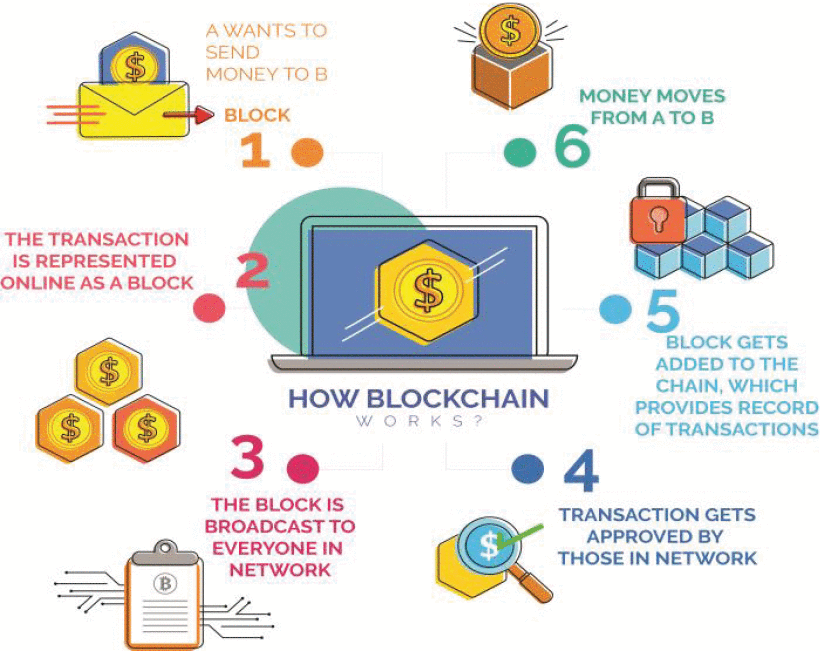General information
Blockchain technology is a decentralized network in which manifold computers participating as nodes. According to Dong (2018), this new technology takes advantage of both pre-existing concepts such as hashing algorithm, timestamp, public key infrastructure and multiple new concepts of rules, algorithms and protocols which play as core components within its architecture, including consensus algorithm, proof-of-work, smart contracts, etc… Thanks to these features, nodes within a blockchain network are peer-to-peer connected and able to perform transactions directly, securely and trustlessly with each other without any third parties.
Blockchain technology has first been introduced by Satoshi Nakamoto (2008) in his Bitcoin invention was to eliminate third-party dependency in transactions, thus, speed up the processing time of transactions and provide a secure, robust, and trust-worthy peer-to-peer network.

However, there have been more and more new blockchains introduced after Bitcoin with extended capabilities and prominent features, which enable us to solve more problems and extend the use of blockchain, they can be named as Ethereum, Hyperledger Fabric, EOS, etc.
Technical information
As mentioned above, blockchain technology consists of pre-existing and emerging techniques which collaborate logically with each other making blockchain a promising technology to rise in the future. Alharby, Aldweesh and Moorsel (2018) describe blockchain as a sequence of blocks chained together where each block stores its previous one’s hash, which is created by hashing algorithm. And, besides, each block also contains transactions. According to Antonopoulos’s speech in 2016 at University of College London (UCL), a blockchain network contains multiple nodes, each of which hold an identical copy of database contain all blocks from the genesis block of a blockchain. Any of these nodes could be miners who is responsible for validating transactions by verifying their signatures and balances (Alharby, Aldweesh and Moorsel 2018). After validating a transaction, miners introduce a block, which is a result of an intensive computational problem, to the whole network (this block is usually referred to as proof-of-work) (Alharby, Aldweesh and Moorsel 2018). This block will be validated by other nodes on the network based on the consensus rules which define how transactions should be conducted, how blocks in the chain should look like and many other criteria (Consensus Algorithms, Blockchain Technology and Bitcoin UCL – by Andreas M. Antonopoulo 2016).

Smart contract is one of the important components of blockchain which may make it become a disruptive technology, especially Ethereum blockchain which is “Turing complete” (Antonopoulos and Wood 2018). Smart contract is basically a computer program that produces outputs as the results of the processed inputs; but this computer program is implemented on the blockchain. Decentralized applications (Dapps), each of which consists of a smart contract and a front-end web (Antonopoulos and Wood 2018). Furthermore, Antonopoulos and Wood (2018) also state that Dapps will introduce the next generation of World Wide Web with peer-to-peer protocols, this evolution is usually referred to as web3 (the third version of web).
Historical information
If anyone knows about Bitcoin, they will probably know the name Satoshi Nakamoto who is the creator of Bitcoin. According to Rajput et al. (2019), in 2008, Satoshi Nakamoto published a paper with the title of “Bitcoin: A Peer-to-Peer Electronic Cash System”. That paper is usually called the White Paper of Bitcoin which introduced Bitcoin to the world. However, until now, Satoshi Nakamoto identity has never been revealed, nobody knows who is (are) Satoshi. In 2019, the first block was created by Satoshi Nakamoto, marking the birth of blockchain (Singh and Singh 2016). It is the root, the beginning of the Bitcoin blockchain, therefore, it is called the Genesis block (Singh and Singh 2016). If we traceback from the current block on Bitcoin blockchain (block number more than 600,000), we will end up with the Genesis block.

Impact of technology
Blockchain technology offers security in transactions, more control of ownership over users’ data asset and rapid and direct transactions between users without any third parties. Therefore, blockchain may change the way transactions work, overseas transactions will no longer be delayed by “3 to 5 business days”, but just a few minutes. Companies may have their dapps for internal use, thus, the network is strengthened. Furthermore, businesses may have their partners in a blockchain where their data is transmitted without worries of being tampered and history of transactions are securely and robustly stored on every participant’s ledger.

Although, blockchain is still a few years away from widely official adoption, it is moving very fast on its way. It has already reached peak of inflated expectation in Gartner Hype Cycle for Emerging Technologies, 2016 (Panetta 2016). Once blockchain becomes mainstream, we may see these things happen: blockchain-based self-driving cars where communication network between them is extremely robust, blockchain-based IoT which may have everything we own including cars, houses, phones, etc… recorded on blockchain where we can exchange them for crypto coins without any papers or banking activities.
Reference
Antonopoulos, A & Wood, G 2018, Mastering Ethereum, O’Reilly Media, retrieved 28 April 2020, https://github.com/ethereumbook/ethereumbook
Alharby, M, Aldweesh, A & Moorsel, AV 2018, ‘Blockchain-based Smart Contracts: A Systematic Mapping Study of Academic Research’, 2018 International Conference on Cloud Computing, Big Data and Blockchain (ICCBB), Fuzhou (China), section II (A), https://ieeexplore-ieee-org.ezproxy-f.deakin.edu.au/document/8756390.
Consensus Algorithms, Blockchain Technology and Bitcoin UCL – by Andreas M. Antonopoulos 2016, video recording, Department of Computer Science at University College London, London.
Dong, X 2018, ‘A method of image privacy protection based on blockchain technology’, 2018 International Conference on Cloud Computing, Big Data and Blockchain (ICCBB), Fuzhou (China), section I, https://ieeexplore-ieee-org.ezproxy-f.deakin.edu.au/document/8756447.
Nakamoto, S 2008, Bitcoin: A Peer-to-Peer Electronic Cash System, retrieved 24 April 2020, https://bitcoin.org/bitcoin.pdf.
Panetta, K 2016, 3 trends appear in the Gartner Hype Cycle for Emerging Technologies, 2016, Gartner, retrieved 28 April 2020, https://www.gartner.com/smarterwithgartner/3-trends-appear-in-the-gartner-hype-cycle-for-emerging-technologies-2016
Rajput, S, Singh, A, Khurana, S, Bansal, T, Shreshtha, S 2019, ‘Blockchain Technology and Cryptocurrenices’, 2019 Amity International Conference on Artificial Intelligence (AICAI), Dubai, UAE, Section III, https://ieeexplore-ieee-org.ezproxy-f.deakin.edu.au/document/8701371
Singh, S & Singh, N 2016, ‘Blockchain: Future of Financial and Cyber Security’, 2016 2nd International Conference on Contemporary Computing and Informatics (IC3I), Noida, India, pp. 463 – 464, https://ieeexplore-ieee-org.ezproxy-f.deakin.edu.au/document/7918009

